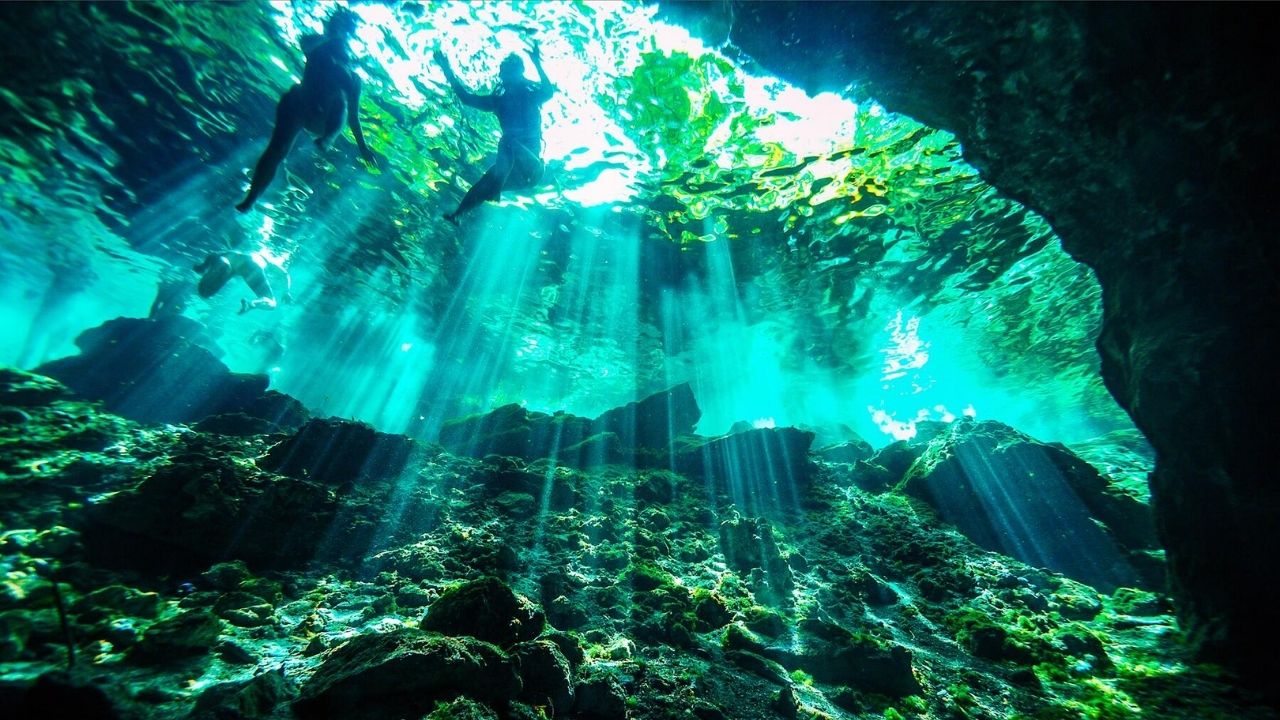From time to time, I talk about badass extreme sports experiences outside the states, but scuba diving is much different. Unless you’re actually planning a trip abroad, you don’t need to go far for some scuba action.
There are dozens of world-class diving spots to fall in love with right here in the United States. In fact, 30 of the 50 states have a coastline that spans 4.5k shy of 100,000 miles along the majestic Gulf of Mexico, Atlantic and Pacific Oceans, and even freshwater playgrounds. With this sea of opportunity, many people consider the U.S. the BEST country for scuba diving.
U.S. scuba diving spots have it all – breadth and depth of marine life, abundant coral species, and even shipwrecks for the history buffs.
1. The Big Island of Hawai’i
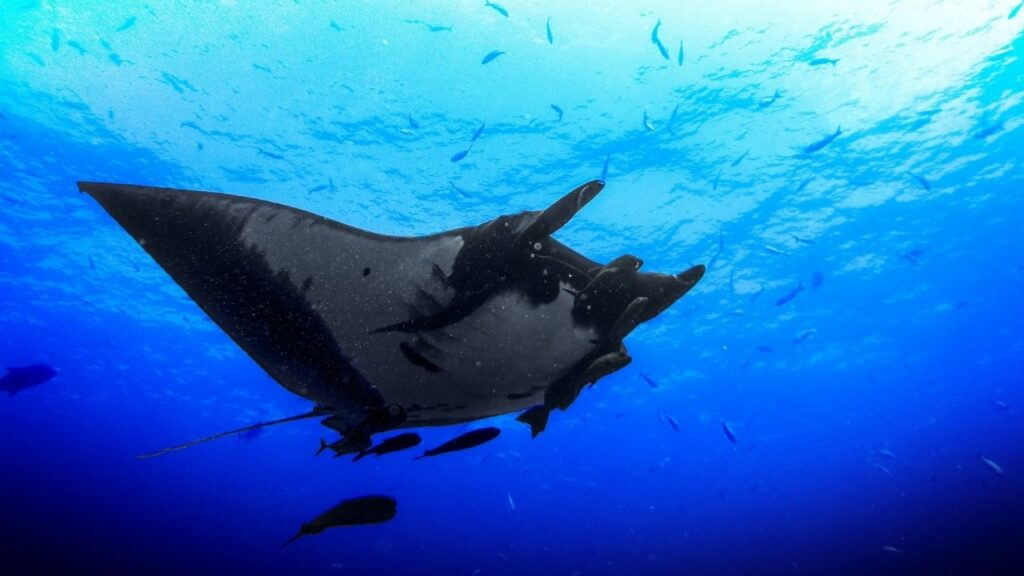
| Marine Life | Manta-Ray, Zooplankton, Dolphins, Whitetip Sharks, Humpback Whales, Hammerhead Sharks, and Jellyfish |
| Best Time to Visit | September and January |
| Water Temperature | 75 to 80oF |
| Other Popular Spots | Pelagic Magic, Black Rock Point |
| Other Extreme Sports | Skydiving, Cliff diving, Cave diving, Swimming with Sharks, Kayaking |
Hawaii and Florida are the two best states for scuba diving in the United States of America. Scuba on the Island of Hawaii is known for its beautiful blackwater diving, while Florida has a long list of world-class diving spots for every age.
We’ll get to Florida next, but first, let’s travel to island paradise. The Island of Hawaii is an exotic scuba diving hotbed, especially the Kona region, where you can do diving or snorkeling with the manta rays. You’ll find Kona on the western coast of The Big Island.
Manta rays aside, Kona’s true specialty is blackwater diving. It does take a bit of courage but is well worth the effort. If you end up liking the blackwater dive, you must try Pelagic Magic for THE knockout diving experience.
Once you’re done with Kona, head to the Black Rock Beach in Maui. You’ll get otherworldly underwater views of Black Rock Point there.
2. Santa Rosa Beach, Florida
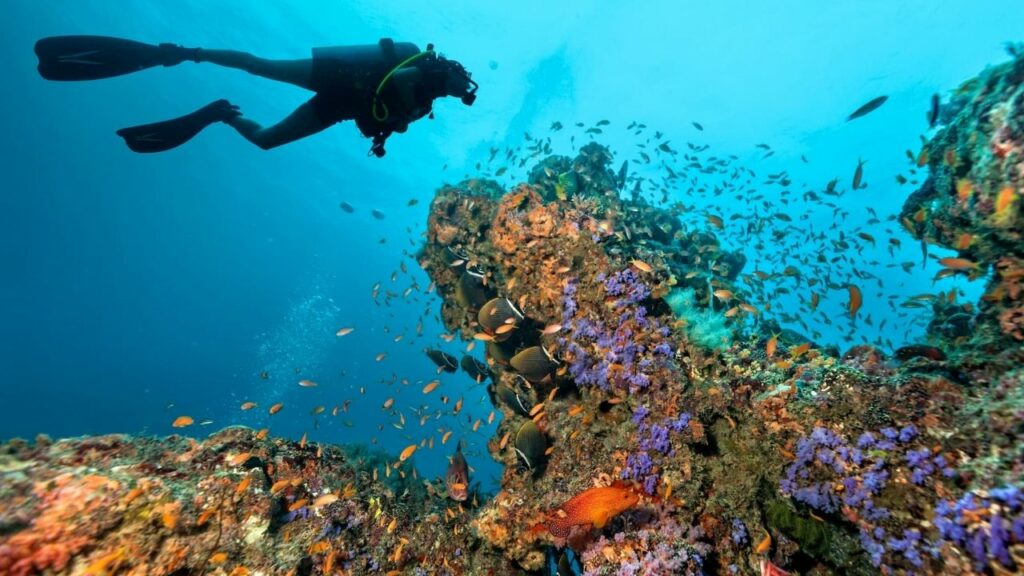
| Marine Life | Goliath Grouper, Coral species, Sharks, Sailfish, |
| Best Time to Visit | March through July |
| Water Temperature | 75 to 82 oF |
| Other Popular Spots | Key Largo, Phil Foster Park, Underwater Museum of Art, Blue Heron Bridge, USS Oriskany |
| Other Extreme Sports | Indoor skydiving, Skydiving, ATVing, Ziplining |
It’ll take a few of these trips to visit all of Florida’s gin-clear underwater world. With freshwater springs, underwater caves, and reefs in wrecks, it’s no wonder it’s among the two best scuba diving states in the U.S.
Start with the most popular and versatile diving sport in Florida: Key Largo. It’s in the third-largest barrier reef, housing dozens of endemic and indigenous species. Speaking of the barrier reef, you can find a mesmerizing one here – the shipwreck of USS Spiegel Grove, a massive US Navy Landing Ship docked a couple of years ago.
Then go visit the Underwater Museum of Art in Santa Rosa Beach. The scuba diving location has about 19 structures made of metal that wouldn’t harm the water. And if you’re lucky, you might get to see the 800+-pound big Goliath Grouper.
Next, head to Pensacola for more shipwreck diving like the 911-footlong USS Oriskany wreck. Or…simply head to Panama City and Vortex Spring to snorkel with rich marine life.
3. Ventura, California

| Marine Life | Giant kelpfish, Bat rays, Octopus, Moray eels, Sheepshead |
| Best Time to Visit | June through September |
| Water Temperature | 56 to 70oF |
| Other Popular Spots | California Kelp Forests and Farnsworth Bank in Catalina Island, Oil Rigs, Casino Point, Monterey Bay |
| Other Extreme Sports | Skydiving, Flying stunt planes, Parahawking, Slacklining, Trekking |
Scuba diving in California is just as versatile as Florida, if not more. California is home to a dozen world-class diving spots to choose from. You should start your diving adventure with the Santa Catalina Islands and Oil Rigs in South California.
Even though you can find many underwater species here, Santa Catalina Island is world-renowned for its kelp forests scuba diving adventure. In Catalina, head straight to the Marine Point after the kelp for a memorable snorkeling adventure.
On the contrary, you’ll find 25 massive oil platforms and artificial reefs, creating an enchanting habitat for the marine life present.
And if you’re in the mood for something premium and exclusive, you should visit Monterey Bay for the National Marine Sanctuary. The sanctuary is one of California’s richest marine fauna habitats and doesn’t allow more than 30 divers per day.
Read More: Quick Guide to Best Scuba Diving Locations Worldwide!
4. Puget Sound, Washington
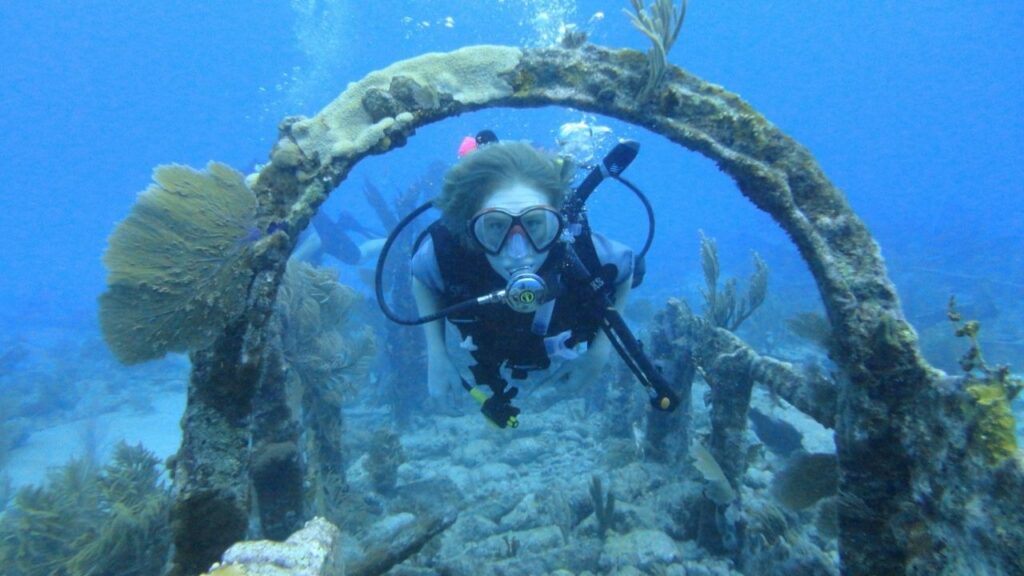
| Marine Life | Giant Pacific Octopus, Wolf eels, Rockfish, Puget Sound Crabs, Scalyhead Sculpin |
| Best Time to Visit | July through September |
| Water Temperature | 46 to 55oF |
| Other Popular Spots | San Juan Islands, Bellingham |
| Other Extreme Sports | Ziplining, River rafting, Indoor Skydiving |
Washington State has three world-famous scuba diving spots: the Puget Sound, Bellingham, and the San Juan Islands. Each has a unique flavor that draws flocks of visitors every summer.
Puget Sound is an excellent recreational scuba diving location for all ages and skill levels. Plus, there’s over a dozen-foot tall Pacific Octopus in critters, like Edmonds Underwater Park and Mukilteo, near Puget Sound.
Bellingham, on the other hand, is strictly for experienced scuba divers. Namely because of the high-pressure water currents.
The San Juan Islands has many striking scuba diving spots for literally everyone. Here, you can get lost in the archipelago of 4 big islands and about 400 smaller ones. Simply start near Whale Rocks and Strawberry Island West Wall.
5. Morehead, North Carolina
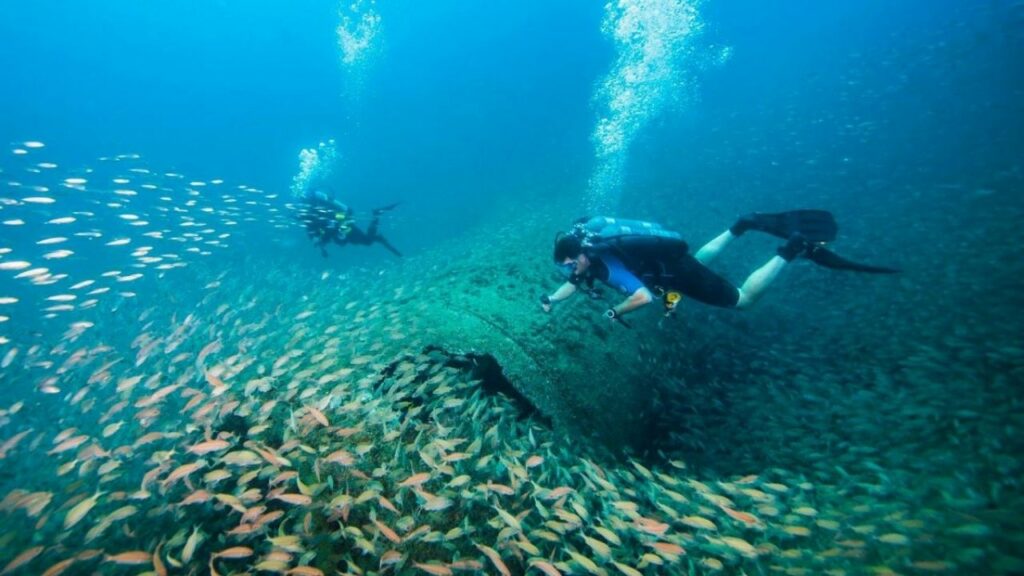
| Marine Life | Sand-Tiger Sharks |
| Best Time to Visit | May to June and September to October |
| Water Temperature | 70 to 80oF |
| Other Popular Spots | Sand Tiger Sharks, Spar, Aeolus, Papoose, Atlas, and Caribsea |
| Other Extreme Sports | Whitewater rafting, Indoor skydiving, Hang gliding |
North Carolina scuba diving is famous for two things: sand-tiger sharks and shipwrecks. Most spots are for intermediate-level divers and above, but there are a few stunning beginner-friendly scuba locations.
The best place for scuba in North Carolina is a coastal area 92 miles off the Morehead city – Outer Banks – popularly known as the “Graveyard of the Atlantic.” Here you’ll find tons of shipwrecks that have become artificial reefs for several species.
Divers worldwide come here for famous wrecks like Aeolus and Atlas, among many others. The most prominent is the Spar – a sunken 180-foot USCG ship now a 110-foot artificial reef. If you’re lucky, you can swim with sand-tiger sharks that are shockingly friendly.
6. Bonne Terre, Missouri
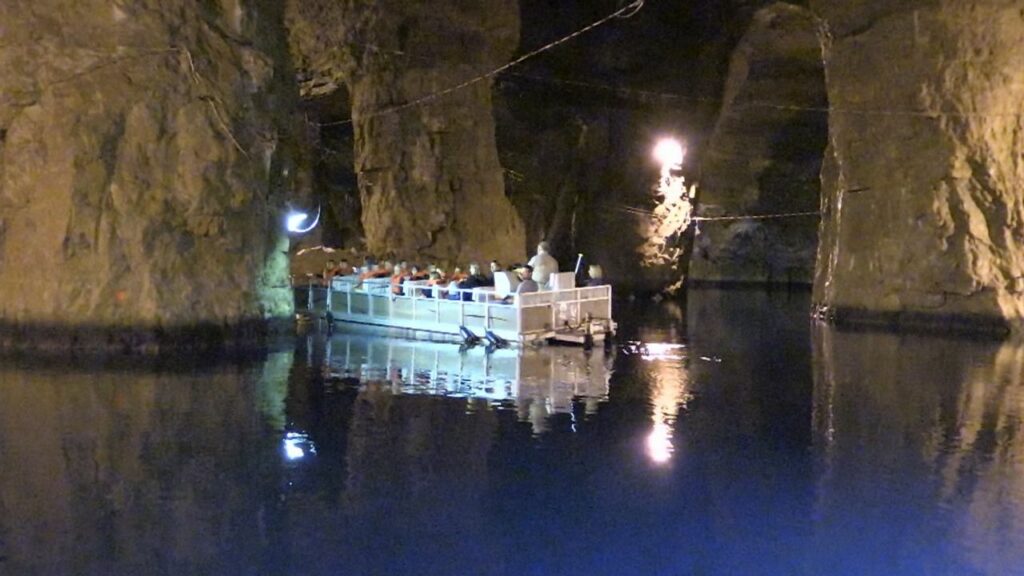
| Marine Life | Only famous for recreational diving |
| Best Time to Visit | All through the year |
| Water Temperature | 600F |
| Other Popular Spots | – |
| Other Extreme Sports | Off-road ATVing, Ziplining, Skydiving |
Missouri is the only spot popular for scuba diving in historical mines. Although that’s pretty much the only thing Missouri scuba diving offers. Yet, it’s still great for recreational scuba diving with friends and family for many reasons.
The Bonne Terre Mines in the Bonne Terre region of Missouri don’t have marine life but something much more enjoyable. Dive in clearwater (more than 100ft visibility) and travel through the remnants of the Bonne Terre mines with more than a dozen trails.
The underwater mine is accessible throughout the year, so you can dive in anytime you want.
7. Flower Garden Banks, Texas
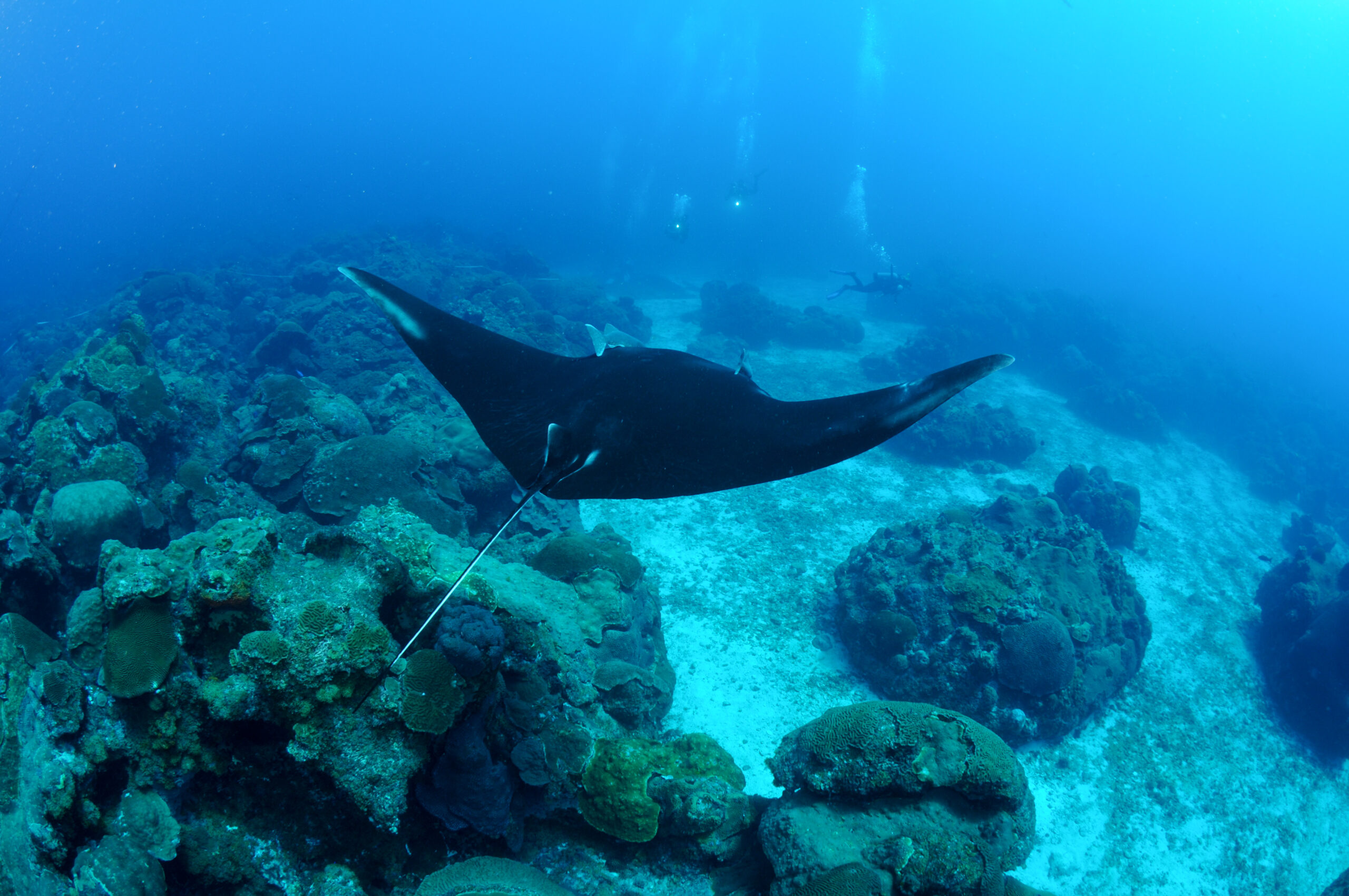
| Marine Life | Manta rays, Silky sharks, Spinner Dolphins, Silky Sharks, Whale |
| Best Time to Visit | April to October (Flower Garden Banks). Other parts of Texas: January to April (points near the Gulf of Mexico), March to June (other places) |
| Water Temperature | 68 to 84oF |
| Other Popular Spots | The Texas Clipper, The Texas Chipper, The Scuba Ranch, Athens Scuba Park |
| Other Extreme Sports | Skydiving, Ziplining, Flyboarding |
Texas is famous for its enchanting scuba diving spots for snorkeling and diving around manta rays. The world-renowned Flower Garden Banks National Marine Sanctuary in Texas has three subsurface salt domes and a seemingly uncountable marine fauna. No wonder Flower Garden Banks is called the Hidden Gem of the Gulf of Mexico.
There are multiple coral reefs in Texas, most of which start at a depth of about 60ft which isn’t “too deep” for most divers.
While it does take some time (about 8hrs) to reach the Flower Garden Banks from the coast, the magnificent marine life includes silky sharks, spinner dolphins, and many other snorkel-friendly underwater species.
Read More: Avoiding Pressure Injuries & Diving Disorders from Scuba Diving
8. Straits of Mackinac Shipwreck Preserve, Michigan
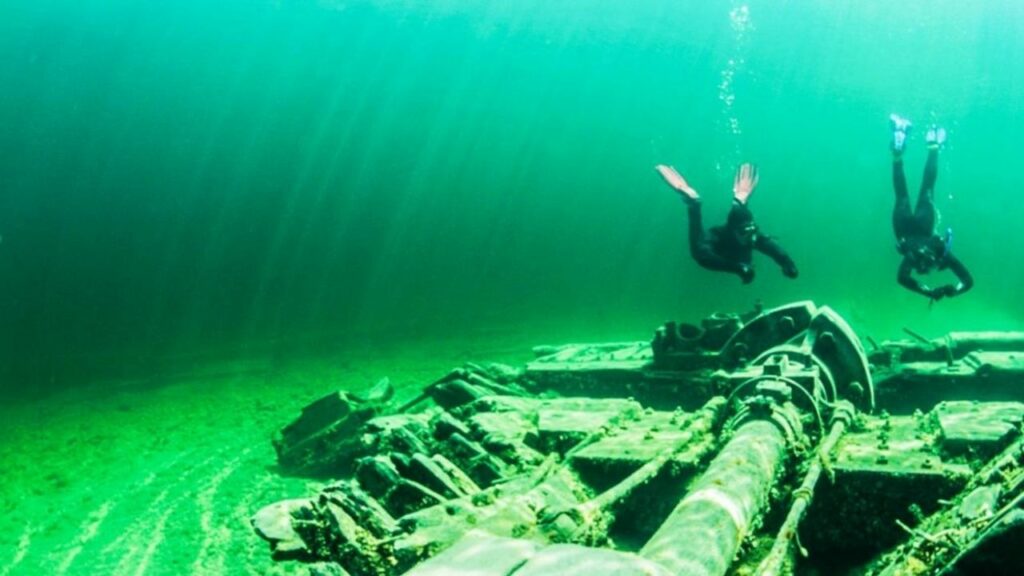
| Marine Life | Famous for shipwreck diving |
| Best Time to Visit | May to November |
| Water Temperature | 40 to 550F |
| Other Popular Spots | Mackinac Island, Cedarville, Lake Huron |
| Other Extreme Sports | Ice climbing, Snowmobiling, Winter Surfing, Ice Sailing |
Michigan is one of the three states that attracts shipwreck divers from around the globe. You won’t find much, if any, marine life here. Still, it’s a haven for shipwreck diving with over 75 ships near Lake Huron (The Presque Isle coastline) alone.
Your first stop should be the Thunder Bay National Marine Sanctuary. It preserves 50 of these shipwrecked diving spots. Then go see the wreck of Cedarville in the Straits of Mackinac Shipwreck Preserve. At 604-feet, it’s the largest shipwreck in Michigan.
Other Incredible U.S. Diving Locations
Already planning a trip somewhere other than these 8 states? Here are more fantastic diving spots:
- Baranof Island, Alaska
- Bethlehem, Pennsylvania
- Midway, Utah
- Kankakee, Illinois

